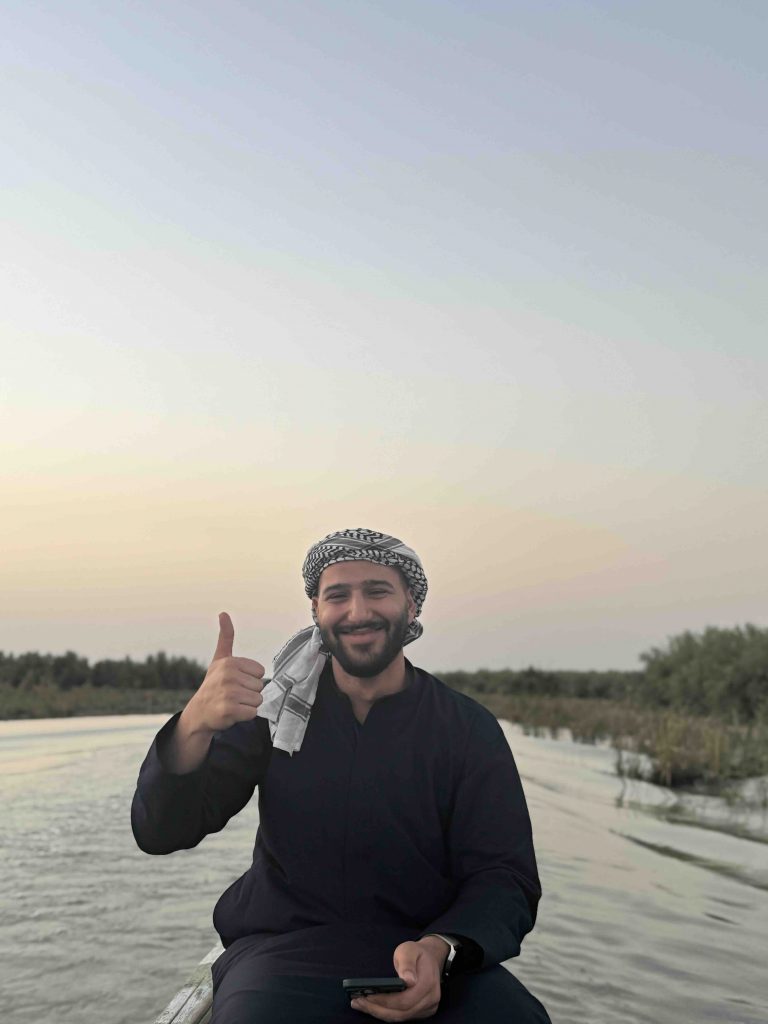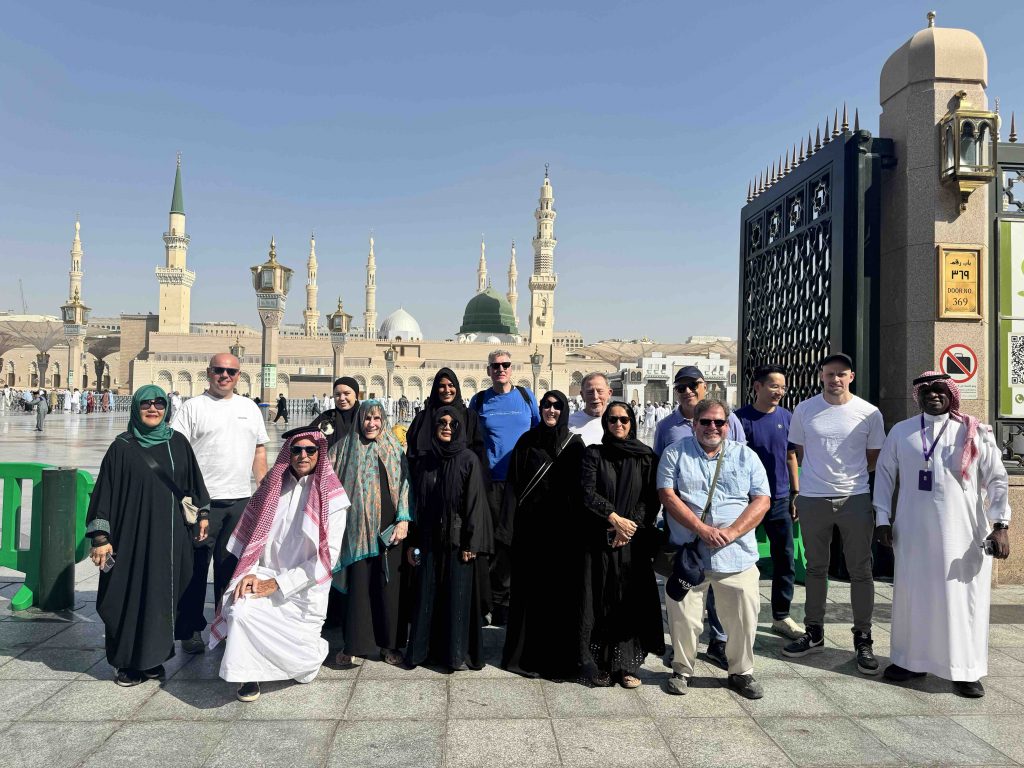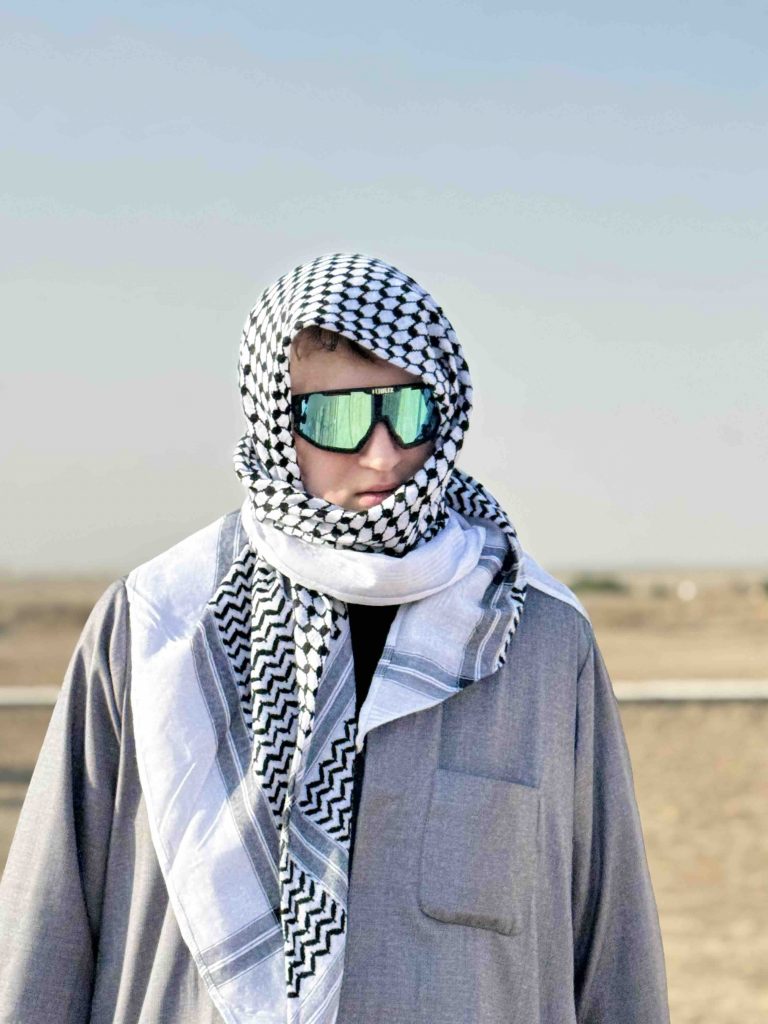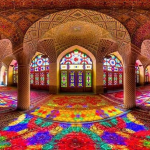The keffiyeh is a headscarf typically worn in the Middle East that celebrates the connection between communities and their land. The keffiyeh can tell you where a person is from based on the colour, pattern and the local name. Keffiyeh actually originate from ancient Mesopotamia, predating Islam. From Kuffa, the keffiyeh has spread across Mesopotamia, the Levant, the Gulf and now, can be found worldwide.
But what is a keffiyeh, what is the history and the meaning behind the scarf?

The Origins of Keffiyeh
Keffiyeh originated in Mesopotamia, modern day Iraq, from the city of Kufa (no surprises there). Kufa in modern day Iraq is a sister city to Najaf, one of the holiest sites for Shia muslims in the world and is located on the bank of the Euphrates river. Kuffa was a hub for trade and community activities, so it is believed that from this city, the keffiyeh got its name and spread further across West Asia.
Linguistically, “keffiyeh” means “the Kufa-style scarf” or “the scarf from Kufa.”
The Function of Keffiyeh
The keffiyeh is a protection against what can often be a harsh climate in the Levant, Mesopotamia and the Gulf. In seemingly never ending arid desert scapes, the keffiyeh can be wrapped around the face to protect from dust and sand. In the scorching heat, the keffiyeh provides shade and can protect the skin from the unforgiving sun.

Keffiyeh In Different Countries and Cultures
Palestine
In Palestine, the keffiyeh is a white cloth with black stitching. The designs often contain a fishnet or chain-link pattern symbolizing connection and resilience, bold lines representing trade routes or heritage, and olive leaves symbolizing peace and strength.
The Palestinian keffiyeh is probably the most recognisable worldwide and has been used culturally to represent support for Palestinians and national pride. Palestinian keffiyeh are almost always 100% cotton and you can still find handmade versions in Palestine today.
Iraq
Iraqis use a mix of white keffiyeh with either red or black designs. The keffiyeh has historically been worn in rural areas by shepherds and farmers, but since has been adopted as a part of national identity and patterns often symbolises the Tigris and Euphrates rivers.

Jordan
The Jordanian keffiyeh is almost exclusively red and white, with very intricate geometric patterns woven into the scarf. While the keffiyeh represents Jordanian identity, it also is a symbol for the Hashemite royals. Like the Iraqi version, it is also commonly worn and related to Bedouin culture.
Saudi Arabia
Saudi Arabia uses two different types of keffiyehs – a solely white scarf known as a ghutra and a red and white keffiyeh known as a shemagh. Rather than a political meaning, the keffiyeh is a symbol of elegance and tradition. Plain versions are for occasions whereas the red and white versions are for the military and everyday use.

The Gulf
The rest of the GCC countries – UAE, Qatar, Kuwait, Bahrain and Oman – also wear keffiyeh that represent traditional dress and formalities rather than national or political identity. The region differs in the materials – Emirates usually preferring a cotton blend whereas Qataris usually have a glossier finish.
Syria
Syrians use a mix of styles similar to the Jordanian and Palestinian keffiyeh. While traditionally, it has been used to cover the heads of farmers, more recently it has been used to mark group alliances through the Syrian Civil War. More commonly, the keffiyeh has been worn by Bedouin communities rather than in metropolitan areas.
Keffiyeh as National Identity, Solidarity and Tradition
Today, the keffiyeh remains one of the most recognisable symbols across the Middle East — a piece of cloth that carries centuries of history, adaptation, and identity. While its patterns and meanings differ from country to country, the core purpose has always remained the same: practicality, connection, and belonging. What began as a simple head covering from Kufa has evolved into a marker of heritage, pride, and resilience. Whether worn for protection, fashion, or symbolism, the keffiyeh continues to reflect the stories and traditions of the people who wear it.

We are experts in Middle Eastern Travel. Join our group tours to the Gulf, Yemen, Iraq, Syria, Iran, Lebanon and Turkey today!





